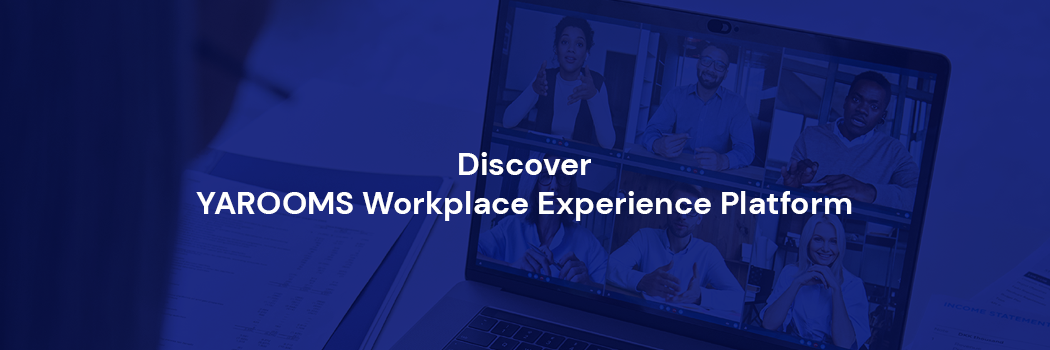Space management used to be simple. You had a physical space, and you put your stuff in it. But now that so much of our lives and work takes place digitally and hybrid is taking over both remote and 100% on-site work models, space planning and space management are becoming increasingly more complex.
Even more, they are becoming increasingly more important too -- particularly from the perspective of employee satisfaction and engagement.
What is space management (and what is space planning) in this new paradigm? What are the essential things Office Managers should know about managing spaces effectively?
We've put together a quick (but comprehensive) guide to space management below. Read on to find out more.
TL;DR:
- Space management involves managing, tracking, and auditing a company’s physical space.
- It has become increasingly important for employee satisfaction and engagement.
- Space management has evolved from reactive cleaning and maintenance to a business department with a seat at the leadership table.
- The main goal of space management is to make office space as cost-effective and productive as possible.
- Space management software can help make the process easier, automatic, and save time and money.
- A better office environment can increase employee satisfaction, productivity, and loyalty, and reduce talent turnover.
- Hybrid work is becoming more popular, making space management even more integral to day-to-day business operations.
- Space management can help save money, optimize space usage, and avoid paying for unutilized square footage.
- Properly planned office spaces can increase productivity, promote flexibility, and make it easier for organizations to adapt to changes.
- Good space management can reduce the workload of workplace admins, improve collaboration, employee satisfaction, and promote environmental sustainability.
- Meeting room booking software, hot desk booking software, and work planning software are helpful tools for effective space management.
What Is Space Management?
Although the space management definition can vary from one company to another, most Office Managers would agree on a general definition, which goes as follows:
Space management is the practice of managing, tracking, and auditing a company’s physical space (e.g. the office space.) This activity frequently involves floor planning, room design, desk arrangements, and so on. In cases such as the pandemic, space management also involved making sure office spaces are safe for employees, as well as compliant with current regulations.
The Evolution of Office Space Management
Space management isn’t a new concept. In fact, it goes as far back as the 1970s.
Arguably, space management in the ‘70s had a different meaning than it does today. What used to be an office-related activity mostly focused on reactive cleaning and maintenance to a business department with a seat at the leadership table, space management (and, together with it, facility management) have come a long way.
The main goal of space management today is to know how to upsize or downsize office space to make it as cost-effective and productive as possible. A few years ago, the main focus lay on making spaces as collaborative (and comfortable) as possible.
And if we go back to the 1990s and 2000s, space planning and reallocation strategies were the royalties of the space management world.
In other words, space management has, in itself, responded to how the business world has changed and evolved over the decades. It’s easy to see how people mostly cared about having a clean space in the 1970s, how planning was ultra-important for the cubicle-vs-corner office paradigm of the 1990s, and how downsizing in an intelligent way is now the main focus of Facility Managers.
What will the future look like?
We don’t have a crystal ball, but with hybrid work becoming one of the main preferences among employees and employers alike, we can make a pretty educated prediction: space management will become even more an integral part of the day to day business ops, with office space software at the core of every Facility Manager’s work day.
“Make flexibility a top priority.
This will allow the business to do many operations without the need for specialized space for each of them, saving time and money. Because of today's technology, workers can do their jobs anywhere, whenever and however they see fit in any environment. There are many examples of this, such as a break room that serves as a place for employees to unwind and refocus, but it also serves as a place for brainstorming and pontificating, thanks to the high-tech tools we have at our disposal. Meeting rooms can be used in the same way; when not in use for meetings, they can be used as private working spaces where people can focus without interruptions or hold private calls, for example.
Flexible office space planning can be demonstrated by the use of modular design. Combining many interior components into one unified, adaptable workplace is the idea behind this design concept. Anything that can be used to provide a degree of flexibility; this includes seating, tables, acoustic fittings, and even partition walls.”
Nick Jordan, Founder & CEO of Workello
There is nothing wrong with pen and paper when you’re drawing floor layouts. Just like there’s nothing wrong about spreadsheets showing head counts and resource usages. However, space management software can take the entire activity to a whole new level (as you will read later in this article too.) It can help you make things easier, more automatic, it can remove human error and, frankly, it can save you tons of time, energy, and money. Pen, paper and spreadsheets are simply not enough in 2022 – not when you have great tech at your disposal to help you create better floor layouts.

The Link Between Employee Satisfaction, Office Environment, and Productivity
It’s no secret that we are influenced by our environment. For a long time, though, the connection between environment and mood/ state of spirit has been considered to be more anecdotal than actual science. Multiple studies now point to the fact that how well-lit a room is, as well as how well-organized and decluttered space is can influence a series of issues – ranging from anxiety to depression, cortisol levels, and stress.
It should come as no surprise, then, that employee satisfaction, office environment, and productivity are closely connected. The equation is simple: a better office environment helps you keep your team happy. A happy team is a productive and loyal team. A productive and loyal team is a team that gives everything to the company and drives growth.
To top it off, the less talent turnover you have in your company, the more productive your HR department will be in recruiting, onboarding, and engaging talent. Your employees are the brick and mortar of your business – so the more talented people you attract and retain, the more prosperous the business will be.
In this light, it’s easy to understand that the facility management meaning has grown a lot from “the people making sure the office is safe and clean.” to “people who participate in making the office space a more productive place for everyone – both those remote and those working on site.”
Furthermore, in this context, it makes more sense than ever to invest in a space management system (or space planning software) that helps you make the most out of your office space(s) and drive space optimization to a whole new level.
What Are the Principles of Space Management?
What does space management involve, more specifically?
Modern space management revolves around some basic principles, like:
Regular Assessments Are Key
No matter what kind of company you work with and no matter how solid your current space plan is, keep in mind that things can change a lot. This is precisely why regular assessments are key.
You can run them twice a year, once a year, or even less often than that. Do it with regularity, though -- these assessments should go like clockwork.
Use The Same Planning Methodology With All Offices, Regardless of Size
Using the same planning methodology with all offices is important because it allows you to compare results and find similarities that can help you optimize your space management strategy.
Data and Mathematics Should Be More Important Than Graphics on Screen
It's not that graphic renditions of how the space will look aren't great (they are, check #4 on this list for that). However, in this day and age, data should take precedence.
Clean, reliable data will help you understand what's happening in your space and how you can optimize it to achieve better results. From knowing exactly which spaces are overutilized and which ones are underutilized to knowing which days of the week are likely to be more crowded and how office space utilization drives other metrics around the company, data is king.
And this is precisely why choosing the best space management software for your business is such an important decision -- not just for your sake as the Facility Manager, but for the success of the entire organization.
Have a Clear Space Overview
Here's where graphics come in handy: knowing how the entire layout of your office space will look like helps you understand/ predict how people interact with it and where you can make improvements.
A clear overview of what the space actually looks like will also help you make all necessary interventions before it's too late. For instance, if you realize an office cluster would be better placed in a different location around the building, but the construction manager has already started putting up walls between one area you're thinking of and another one, it might be more difficult to make changes.
If, however, you have a clear rendition of how the space will look like in the end, you can make these kinds of changes without repercussions on the overall budget and project timeline.
“Spaces should be varied.
Your employees require more than just a workstation. They will require, among other things, collaboration spaces, private places, tech-enabled areas, and lounges. Design rooms with the appropriate dynamic in mind, relative to how frequently they will be used. “
Tim Parker, Director of Marketing at Syntax Integration
Make Sure All Employees Will Have Resource/Room Booking Software at Their Disposal
Each employee should find it easy to find a spot around the office, particularly when your organization is based on a hybrid work model. This is where an office space planning tool can come in handy too.
Once the layout is set up, employees can use the space management software to visualize where they'd like to book a desk or a meeting room without having to waste too much time on this.
Of course, there is a lot more to office facilities management space planning than these five main principles. However, if you are starting from ground zero with your space management efforts (or if you want to adapt them to the necessities of the modern-day office), these five points will be a solid starting point.

The Benefits Of Office Space Management
Clearly, space management is important. Here are some of the more specific benefits of doing space planning and management (the right way):
Cost Savings
You don't want your organization to spend any more money than necessary on office space, do you?
Thought not.
Hence, one of the main benefits of space management is that it can help you save money by optimizing your use of space and making sure you're not paying for square footage you're not using. Here’s an ROI calculator you can use to measure and improve the ROI of your hybrid space.
Better Productivity
As mentioned before, human beings are very much influenced by their environment. If the space around them is not conducive to productivity, they won't be as productive as they could be.
However, if you carefully plan your office space and make sure it meets the needs of your employees, you can expect a boost in productivity levels across the organization -- which will have a direct impact on your bottom line.
Constant Improvements
Done right, space management can help you bring constant improvements to your office space plan and environment. By constantly analyzing how your employees use the space and making changes accordingly, you can make sure your office is always evolving to meet the needs of those who use it, when they use it (as opposed to having them wait for another yearly review.)
Furthermore, this too can help you save money and adapt on the go so that you use your office space to its maximum efficiency.
Higher Adaptability
Proper space management also makes it easier for your organization to be adaptable to change. After all, if you're used to making changes to your office space on a regular basis, it won't be as big of a deal (or take as much time) to make more significant changes, should the need arise.
“Make flexibility a top priority.
Creating a flexible space allows the company to execute many functions without having to invest the time (and money) in building a dedicated room for each one. This is made feasible by today's flexible technology, which allows people to work wherever, whenever, and whatever they want in any type of location they require. The innovation of a break room is a perfect illustration of this; it's a nice location in which people can relax and concentrate, but thanks to the technology we have, we can also have spontaneous meetings or collaborative brainstorming sessions there. When meeting rooms are not in use for gatherings, they can be used as private working locations for people to focus without being distracted, or to take private calls, for example.
A modular design is a superb illustration of adaptability in action in office space planning. 'Bringing together a variety of interior components to create a unified, adaptable workplace' is the notion. Seating, tables, acoustic fittings, and partition walls are all examples of items that can be employed to increase flexibility.”
Joe Troyer, CEO & Growth Advisor @Reviewgrower
Save Workplace Admins Time
Good space management can help take some of the load off your workplace admins' backs.
By making it easier for employees to find and book meeting rooms and desks, you free up time for workplace admins to focus on more important tasks -- such as managing workplace technology or running employee engagement programs.
Better Collaboration and Higher Satisfaction
A well-planned space is not just good for employee mood and morale. It can actually help people collaborate better -- and thus, it can help them be happier at work AND more productive too.
All that is pretty much the goal of space management in itself!
These are just some of the most common benefits of proper space management. Every organization has its own goals – and space management can align with those. For instance, to Sara (Customer Success Manager @Onsiter.com), good space management gives organizations the opportunity to be a bit more environmentally friendly.
“Make an effort to be environmentally conscious
A growing number of companies are prioritizing sustainability in their office space planning. Introducing a more natural feel to the workplace has been shown to improve people's satisfaction, teamwork, and production levels. Not only that, but becoming green can help you save a lot of money on your electricity bills by adding things like larger window displays or energy-efficient lighting.”
Sara Johansson, Customer Success Manager @Onsiter.com
.png?width=928&name=Blog%20posts%20photo%20(3).png)
Best Practices of Office Space Management
Effective office space management involves a set of best practices that optimize productivity, collaboration, and employee well-being.
Firstly, flexible layout designs should accommodate diverse work styles and tasks. Secondly, integrating ergonomic furniture and equipment supports employee health and comfort, reducing strain and enhancing overall focus. Regular decluttering and efficient storage solutions maintain an organized environment. Embracing natural light and incorporating indoor plants can improve the ambiance and promote a healthier atmosphere.
Technological infrastructure must be up-to-date and adaptable to facilitate seamless communication and connectivity. Regular feedback from employees should be encouraged to fine-tune the workspace according to their needs. Lastly, a balance between remote work and in-office presence (hybrid work model) should be considered to promote work-life balance and adapt to changing trends.
By adhering to these best practices, businesses can create an office space that fosters creativity, collaboration, and productivity while prioritizing the well-being of their workforce.
Common Space Management Challenges
Modern office space management comes with its challenges. Various factors must be carefully considered, from optimizing collaboration to ensuring employee well-being. Recognizing and addressing these common space management challenges becomes paramount for fostering a productive and harmonious work environment:
- Space utilization: efficiently utilizing available space while avoiding overcrowding or underutilization.
- Collaboration vs. privacy: striking the right balance between open, collaborative areas and private spaces for focused work.
- Ergonomics: ensuring ergonomic furniture and setups to support employee well-being and prevent discomfort.
- Technological integration: managing complex technology infrastructure for seamless communication and connectivity.
- Maintenance and cleanliness: regularly maintaining and cleaning the space to provide a safe and pleasant environment.
- Noise management: addressing noise distractions and finding solutions to maintain a productive acoustic environment.
- Health and safety compliance: meeting health and safety regulations and guidelines to protect employee welfare.
- Sustainability: implementing eco-friendly practices to reduce the office's environmental impact.
- Adaptability: creating a space that can adapt to changing needs and accommodate growth or downsizing.
- Remote work integration: incorporating remote work options and technologies while maintaining a cohesive office culture.

4 Helpful Space Management Tools and Capabilities
Now that we've talked about the benefits of space management let's take a look at some of the tools that can help you with this important task:
Meeting Room Booking Software
As we were saying earlier, meeting room booking software can help you optimize the use of your meeting rooms and make it easier for employees to find and book them.
As opposed to a simple spreadsheet, meeting room booking software and space management software can help you look into in-depth workplace analytics. You know the drill: the more in-depth and clean your data is, the better insights it will provide, and the more likely it is you'll make better business decisions for the future.
Hot Desk Booking Software
Hot desking is the practice of having employees share desks on rotation, instead of each having their own personal workspace.
While it can take some getting used to (for both employees and managers), hot desking/ hoteling can actually have a number of benefits for your organization -- including freeing up space, promoting collaboration, and making it easier for people to find a place to work.
Furthermore, hot desking can also help you save money, it can help all employees to experience the "good spots" around the office, and it can help with overall productivity too.
A hot desk booking software can make it easier for employees to find a place to work, and it can also help you track desk usage and analyze workplace data.
Work Planning Software
Work planning software can help you not just with space management, but with a number of important workplace processes.
With work planning tools, you can manage projects, optimize resources, track time spent on different tasks, and generate reports -- which can come in handy when trying to make data-driven decisions about your office space.
Digital Reception
A digital reception is particularly useful for businesses that receive a lot of visitors, such as co-working spaces, hotels, some medical offices, or retail stores.
With a digital reception, you can track visitor traffic, book meeting rooms, and manage office bookings -- all in one place. And since it's all digital, it can help you save time and be more efficient too.
The Space Management Process: Step by Step
OK, so how, more specifically, do you do space management?
Every Office Manager will most likely have their own version of a space management process. However, the basic process goes like this:
Assess Your Space
The first step is to assess your space and understand what you have to work with.
This means taking a good look at your workplace -- both the physical space and how it's being used.
You can do this by conducting employee surveys, analyzing desk utilization data, and observing workplace activity. This will give you a good idea of how your office space is actually being used -- and what you can do about it.
Invest in the Right Tools
As we mentioned earlier, there are a number of different space management tools available -- and the right tool (or combination of tools) will depend on your specific needs.
If you want to improve meeting room utilization, for example, you might invest in meeting room booking software.
Survey Your Employees
As part of the space management process, it's important to survey your employees and understand their needs and preferences.
This can be done through employee surveys, focus groups, or one-on-one interviews.
Outline and Measure Your Goals
Now that you have a good understanding of your workplace and your employees' needs, it's time to start setting some goals.
When outlining your goals, it's important to be as specific as possible. For example, rather than saying "I want to increase collaboration," you might say "I want to increase the number of people using the office space by the end of the next quarter."
Monitor and Improve
Finally, it's important to monitor your progress and make continual improvements.
This means tracking the metrics that are important to you, such as employee satisfaction, space utilization rates, or the number of people using the office space.
You should also be sure to survey your employees on a regular basis to get their feedback and ensure that your space management strategy is still meeting their needs.
With these tips in mind, you should be well on your way to creating a more efficient, productive, and enjoyable workplace for your employees. It's obviously not a walk in the park -- but good planning and setting your eyes on the overarching goal (employee satisfaction) will help you get through it!

Employee Engagement in Office Space Management
Involving Employees in the Decision-making Process for Workspace Design/Layout
When managing office space, ensuring everyone feels valued is paramount. Incorporate employees' input when designing and laying out workspaces because they're the ones using it daily. It makes them feel part of the organization's development and improves their comfort level, directly affecting their job satisfaction and overall productivity. Remember, "one size fits all" doesn't apply to workplaces; understand everyone's unique needs before jumping into any layout plan.
Creating Opportunities for Employees to Provide Feedback On Their Workspace Preferences
Actively soliciting feedback empowers employees, making them become active managers rather than passive receivers. Whether through surveys or informal discussions, invite them to share what amenities influence their stress levels positively or highlight any discomforts in their workspaces — every opinion matters when optimizing office space.
Implementing Employee-Driven Initiatives to Personalize Workspaces (Plants, Photos, etc.)
Does a touch of greenery brighten up an employee's day? Family photos act as a motivational reinforcement, too. Encourage personalized elements within reasonable boundaries for individual work areas—these personal touches make employees associate more with their spaces and lend spirit to what could otherwise be sterile cubicles.
Promoting a Culture of Respect and Shared Responsibility for Maintaining a Clean and Organized Office Space
Office space management extends beyond the planning phase. It requires consistent upkeep, best achieved through fostering a culture that values cleanliness and organization. Encourage everyone to play their part, from labeling shared resources to keeping standard rooms tidy — when respect for the workspace permeates the office atmosphere, it spins off into skyrocketing productivity levels. Nothing beats having a clean environment free from distractions where peak creativity can thrive!
Measuring Success and Continuous Improvement in Office Space Management
Establishing Key Metrics to Track the Effectiveness of Office Space Management Strategies
Continuous improvement is a crucial aspect of successful office space management. To monitor improvement, we need measurable parameters or critical metrics. For instance, monitoring utilization rates can help ascertain how effectively the workspace is used.
Another effective metric is employee satisfaction surveys. It gives an insight into employees' comfort level with their working environment. By regularly tracking these metrics, managers from offices pace can better understand the tangible effects of their strategies on overall productivity and work efficiency.
Regularly Reviewing and Analyzing Data to Identify Areas for Improvement
Regular review and analysis of collected data are required to maintain peak productivity levels. Just as physicians require continuous patient feedback to adjust treatments, office space managers need frequent data updates to refine their strategies accurately.
Conducting diligent reviews makes it possible to pinpoint discrepancies between desired outcomes (like increased productivity) and reality (as reflected by actual utilization rates). The difference suggests opportunities for enhancing overall space management.
Analyzing this data helps highlight inadequacies often unnoticed during day-to-day operations—issues like unused spaces or inefficient workstation design.
Iterating and Adjusting Office Space Management Strategies Based on Feedback and Data Analysis
Once areas needing improvement have been identified through reviewing data analytics trends, it's time for strategic course corrections to be made based on cogent insights derived from that information. Iterative changes constitute a never-ending cycle vital for excelling at office space planning.
Any adjustment should involve seeking consensus among the team members who utilize that area daily. If structural adjustments are necessary following feedback—an open dialogue will ensure employees feel seen, heard, and valued, which invariably increases their willingness to adapt to these changes.

Trends in Office Space Management
As we progress through the digital age, three significant shifts stand out in office space management—remote work, sustainability in design, and innovative technology integration. Let's explore these trends one by one.
The Rise of Remote Work and Flexible Work Arrangements
The concept of work has undergone a seismic shift due to advancements in communication technologies – going from strictly physical spaces to remote settings overnight. At this stage, understanding the role of flexible work arrangements is paramount for an efficient office space manager.
Reports suggest that telecommuting could expand productivity by 4.9 million man-days per week—a staggering leap facilitated by employees saving time on commuting. As a result, it’s crucial for managers not only to optimize amidst this trend but also future-proof workplaces for hybrid working models – intertwining flexible and traditional arrangements.
The Impact of Sustainability on Workspace Design
Sustainability isn't just another buzzword inside today's workspace; it's become ingrained within our collective conscience. Leading-edge companies are now considering eco-friendliness while crafting their offices – spawning aesthetic yet practical designs that minimize environmental footprints.
Prioritizing accessibility in structures along with energy-and-water conservation is key. Moreover, emphasizing natural light and implementing robust recycling systems are a few of the many steps that office space managers can take towards sustainable workspace design.
The Integration of Smart Technology in Office Spaces
Embracing space management in offices continues beyond adjusting furniture. Today, it extends to integrating smart office technology—elevating simplicity, productivity, and workplace engagement.
Think about thermostat sensors that adjust the temperature according to employee preferences or intelligent lighting systems catering to different work moods. Even using powerful real-time data analytics software for managing fixed assets indicates the expansive utilities that modern tech offers to an ardent office space manager.
Understanding Office Space Management: FAQS
What Are the 3 Factors in Space Management?
There are three primary factors to consider when managing your office space: 1) effective planning; 2) solid implementation; 3) regular office space data tracking.
What Is the Main Goal of Space Management?
The main goal of space management is to create a more efficient, productive, and enjoyable workplace for employees.
What Are the Principles of Space Management?
The main principles of space management revolve around making space management more than just a "happenstance", but a regular process within an organization. These principles are 1) assessment, 2) right-sizing, 3) re-configuration, 4) consolidation, and 5) monitoring & improving.
How Does Office Facilities Management Run Efficiently?
Office facilities management can run efficiently through effective planning, organization, and communication. This includes regular maintenance of equipment and facilities, implementing sustainable practices, managing energy consumption, and ensuring compliance with health and safety regulations. Efficient office facilities management can also involve outsourcing services to professional service providers and leveraging technology to automate routine tasks.
How Do You Manage Small Office Space?
Managing a small office space involves optimizing the use of available space, minimizing clutter, and creating a functional and organized work environment. This can be achieved through proper space planning, efficient storage solutions, and maximizing natural light. Other strategies include implementing sustainable practices, creating flexible workspaces, and leveraging technology to automate routine tasks and reduce administrative workload.
How Do You Manage Large Office Space Effectively?
Managing large office spaces effectively requires a strategic blend of organization, resource allocation, and employee engagement. Firstly, implementing a flexible layout that combines open areas for collaboration with private zones for focused work can optimize space utilization. Investing in ergonomic furniture and ensuring proper workstation setups supports employee comfort and productivity. Regularly reviewing and adjusting the spatial arrangement based on evolving needs prevents unnecessary clutter and congestion. Leveraging technology for communication, task management, and room booking enhances efficiency. Furthermore, appointing a dedicated space management team and encouraging employee feedback creates a seamless system for addressing issues promptly.
What Does a Space Manager Do?
A Space Manager is responsible for the efficient utilization of an organization's office space. This includes developing space utilization plans, coordinating space assignments, and overseeing the move process.
What Are the Benefits of Space Management?
The main benefits of space management are:
- increased efficiency and productivity
- decreased costs
- improved employee satisfaction
.png)











